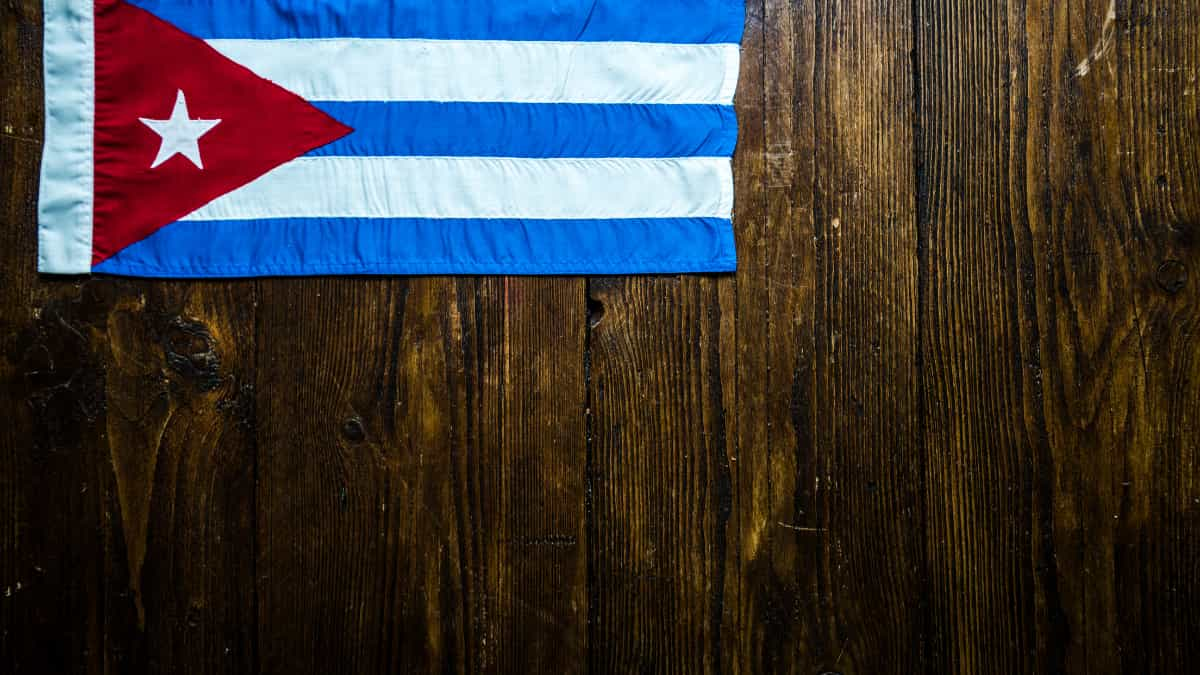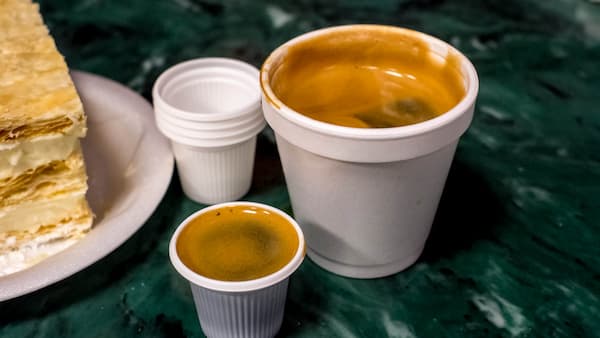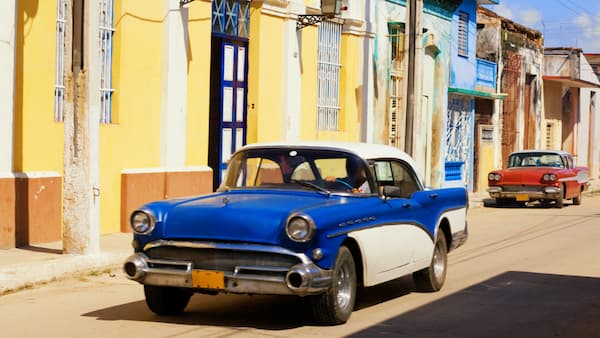How To Make Cuban Coffee 101
Alongside such classics as ropa vieja, medianoches, and roast pork, Cuban coffee is one of the quintessential flavors of the island nation.
Cuban coffee has its own unique flavor born out of necessity and making do, and that taste is one of the things Cuban expats tend to miss the most.
Strong espresso, usually brewed in a Moka pot, combined with a delicious sugar foam, in a demitasse cup: the cafecito is a classic recipe for good reason.
The good news is that we can tell you exactly how to make Cuban coffee at home!

What Is Cuban Coffee?
While there are a few different coffee drinks that are popular in Cuba, the drink known as café Cubano is composed of strong Cuban espresso blended with sugar that turns into a caramel foam.
The coffee beans in Cuba tend to be a very dark roast, which means the brewed espresso can end up on the bitter side. The sugar foam in the popular drink counters this trait.
The dark roast beans are traditionally brewed in a Moka pot, but in the U.S., most people use a typical espresso maker to get similar results. Fortunately, you can easily make a Cuban coffee with either brewing method.
The first few drops of espresso go into a prepared demitasse cup (or tacitas) with sugar. The heat from the espresso helps you to whip the sugar into a thick, satisfying foam, called espumita in Cuban slang.
That whipped sugar creates a topping that (slightly) mimics the usual crema found on top of a pulled espresso shot.
The heavy sugar foam also helps cut through the bitter flavors in the concentrated, dark roast coffee grounds, resulting in a drink that needs no milk to lighten it up.
It’s a favorite of Cubans everywhere, and at any time of day: at breakfast with pan tostado (toasted Cuban bread) or pastries, at lunch or even dinner.
There are other much-loved coffee drinks in Cuba, as well, and they’re worth investigating too.

Types Of Cuban Coffee
Just like with any coffee culture, coffee in Cuba comes in many cherished formats, and the café Cubano has a few variations that are worth exploring while you’re experimenting with this specialized drink.
All of these variations can be made with proper espresso out of the espresso maker of your choice, but traditionally the Moka pot reigns supreme in Cuba.
Colada
The most common coffee drink in Cuba, a four oz. coffee combined with the sugar foam we’ve already mentioned generally served in cups only slightly larger than espresso cups.
It’s less than a standard cup of coffee, but the brew is strong enough and sweet enough that 4 oz is sufficient for any coffee lover’s needs.
Cortadito
This beloved espresso drink is made with unsweetened coffee and steamed milk.
It’s on par with a macchiato, Cuban-style. The intense flavor of the dark roast coffee grounds is offset by just enough dairy to round it out.
Related Read: Cortadito
Café con Leche
Much like the cortadito, this drink features unsweetened coffee and steamed milk. But this variation is closer to a latte or café au lait, with more milk added compared to the cortadito.
While, of course, there are plenty of people in Cuba who take their coffee black, with no sugar or sugar foam, these drinks are part of a rich history of coffee drinking on the island–and one that has been imported by Cubanos everywhere they’ve gone.

Café Cubano – Cafecito History
While the coffee plant found its way to Cuba in 1748, the island didn’t really develop a proper coffee industry until the 1790s, when the country saw a stronger French influence due to an influx of creoles fleeing Haiti in the wake of the revolution.
Over time, the coffee production in Cuba grew to rival its other main export: sugar.
The fact that sugar and coffee were both major industries probably plays a major role in their marriage in the beloved café Cubano and its decadent sugar foam.
In addition to a bustling export business, domestic consumption of coffee grew as the Cuban people incorporated Cuban espresso into their daily routines.
Cuba would go on to become the top coffee exporter in the world in the 1940s.
But, the Cuban Revolution of 1959 was the precursor to a sharp decrease, particularly as embargoes from the US and other countries influenced the ability of Cuba to both import and export trade goods.
The sharp drop in production that followed the nationalization of industries has resulted in a sadder café Cubano on the island itself.
Cheaper robusta beans have somewhat replaced what the island used to produce, and some of that ground coffee is also cut with chicharo, a pea-like vegetable that adds bulk to the coffee or espresso.
Outside of Cuba, many immigrants and their descendants still prefer Cuban espresso brands like Cafe Bustelo and pilon, though American conglomerates have bought out most of the brands.
But the dark, rich flavor remains–making a café Cubano easy to achieve.

How To Make Cuban Coffee
To make a cafe Cubano, you’ll need a few specific ingredients and a couple of pieces of equipment.
The good news is that what you need isn’t very expensive, and the components you need for this recipe work equally well for the cafecito, the cortadito, cafe con Leche, and so on.
What You’ll Need
- A Moka pot (if you have another espresso maker, this can also work in a pinch)
- Ground Cuban coffee, such as Café Bustelo or Pilon espresso
- If you can’t find these brands, you can substitute some very dark roasts ground for espresso
- Demitasse cups
- Traditionally, many Cuban coffee lovers use a measuring cup for whipping their sugar into espumita, and it can be helpful
- A spoon or another implement for stirring/whipping the sugar
- Sugar!
- Opinions vary as to what kind of sugar is best, but you can use whatever type you prefer
- Brown sugar creates a thicker foam and a sweeter flavor, with hints of the molasses
- White granulated sugar gives a more neutral flavor
Once you’ve got all your ingredients and equipment ready, you’re ready to make your Cuban coffee according to the recipe.
How To Make Café Cubano
To get started on this recipe, set up your Moka pot with your Cuban espresso or other dark roast coffee in the correct grind.
Step 1 – Make Your Cuban Espresso
We recommend using pre-boiled water in the bottom chamber of your pot to speed up the process a bit. Note – It’s also possible to use an espresso maker for this. Just brew a regular shot instead.
Step 2 – Sugar Time
While you’re waiting, add your sugar to the espresso cups or to your measuring cup if you’re using that tool for the process.
We recommend starting with two teaspoons of sugar for each cup. Of course, you can add more sugar, up to three teaspoons of sugar (equal to one tablespoon), if you like your coffee sweeter.
Step 3 – Make A Concentrated Mix
Once you have your Moka pot espresso ready in the pot, add a few drops of the coffee to your sugar in the cup, and begin stirring and whipping up the mixture while you let the pot continue to brew.
It should be like a concentrated mix.
By the time you have your sugar foam whipped up properly, the strong espresso you’re brewing should be done, no matter your brewing process.
Step 4 – Add More Coffee
Pour the remaining Cuban espresso over your sugar foam, stirring all the while. You can add more coffee if you want a stronger taste. If you’re using a measuring cup, you can pour it into the cups and serve immediately.
Wrapping Up
While it’s not your typical coffee shop fare, the cafecito or Cuban coffee is a favorite for a good reason.
Alongside the cafe con Leche and the cortadito, it’s a great, balanced cup full of flavor and aroma. It’s definitely essential to make sure you serve immediately because you don’t want to lose the creamy sugar foam.
While Cuban restaurants are a great source for the delicious beverage, it’s easy to learn how to make Cuban coffee at home.
With the right ground coffee, the proper espresso maker, and a little experience making the sugar foam that is so important, you can make Cuban coffee style and enjoy what most Cubans consider a daily pleasure, taken in a small cup.

